How to Make a Roux
Updated: Apr. 25, 2024
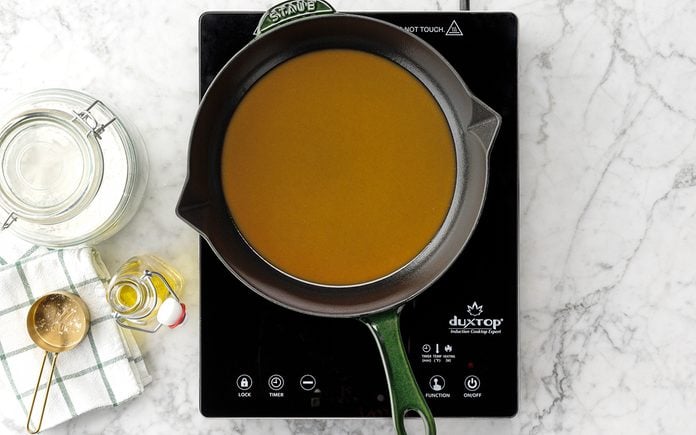
Roux is the foundation of some of your favorite dishes: gravy, macaroni and cheese, chowders, gumbo and more. We'll show you how to make a roux and the best way to store it so you always have it ready to use.
Roux is what makes chowders, stews and from-scratch gravy thick and silky. It’s what makes New Orleans gumbos rich and nutty. And—believe it or not—it’s made up of just two ingredients.
Stirred into hundreds of recipes, a roux is a mixture of equal parts flour and fat, usually butter or oil. What makes one roux different from another is its color and cook time. But it’s a simple combination, and knowing how to make a roux is something every home cook should learn.
Before moving ahead check if the flour expires. Learn how long different types of flour last and how to store them.
What Is Roux?
Roux is a French word (pronounced ROO) that refers to the combination of flour and fat that’s used to thicken sauces and soups. After combining the two ingredients, roux is cooked for a variable amount of time depending on the type (more on that below). The flavor develops the longer it’s cooked, making a dark roux significantly richer in flavor compared to a white roux.
How Do You Use Roux?
Most of the classic mother sauces use roux, and you can’t make a great gravy without it. While it’s only one of many ways to thicken a sauce, roux is traditional when making cheese sauces for mac and cheese or Cajun-inspired dishes like Crawfish Etoufee or savory Seafood Gumbo. Roux is also a great way to make creamy soup without using cream, turning a soup like tomato bisque into a thick and creamy concoction.
What Are the Four Types of Roux?
There are four types of roux: white, blond, brown and dark. They all contain the same ingredients—equal parts flour and fat—but the colors differ based on how long you cook the mixture.
- White roux is the most common and has the most thickening power. You’ll find it in recipes for white sauce (also called bechamel) and soups. You only cook this roux long enough to eliminate the flour’s raw flavor, about 2 to 3 minutes. Here are a few tips for making a gluten-free bechamel sauce.
- Blond roux has an off-white color you could call “eggshell” and a buttery flavor. It’s perfect for quick pan sauces. You would use this type of roux to make veloute (one of the classic mother sauces) but you can also use it in any recipe that calls for a white roux. Blond roux cooks for 5 to 10 minutes.
- Brown roux is caramel-colored and has a nutty, rich flavor. Use it in complex soups and stews, and cook it for 20 to 30 minutes.
- Dark roux is the darkest and most flavorful roux. It requires constant stirring. You’ll also find that many cooks use vegetable oil instead of butter for a dark roux, to avoid burning the butter. You’ll end up with a maple-colored mixture that doesn’t have as much thickening power as the lighter versions, but it is deeply flavorful. To reach this level, cook at least 45 minutes.
What Is Dry Roux?
Dry roux is simply toasted flour. You can make it in a skillet on the stovetop or bake it in a 350ºF oven for about 25 minutes. Either way, make sure to stir it occasionally to get an even color, until the flour is brown.
What Can You Substitute for Flour in a Roux?
For gluten-free thickening power, look to any of these ways to thicken a sauce. Skip the flour and make a cornstarch or arrowroot slurry as a thickener to mix into your sauce or soup at the end of the cooking time. Or, if you want to keep the nutty flavor of a roux, try swapping in sweet rice flour for wheat flour. It’s ground from glutinous rice, so it creates the same silky texture as using regular flour.
How to Make a Roux for Any Dish
This recipe makes enough roux to thicken 1 cup of milk or broth.
Ingredients
- 2 tablespoons butter or vegetable oil
- 2 tablespoons all-purpose flour
- 1/8 teaspoon salt
- Dash white pepper
Editor’s Tip: Most roux recipes call for butter because it’s naturally flavorful and rich. If you’re making a dark roux, you may want to consider using an oil with a higher smoke point, like canola or vegetable oil, to prevent the mixture from burning. You can also use melted shortening or even bacon grease to make your roux.
Directions
Step 1: Make a white roux
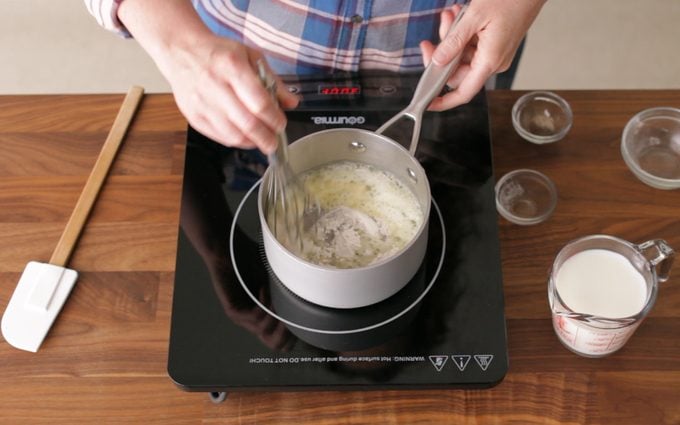
All roux starts with a white roux—cooking the roux just long enough to eliminate the taste of raw flour. In a small saucepan, melt the butter (or oil) over medium heat. Add the flour, salt and pepper and stir until combined. Cook, stirring frequently, for 2 minutes, until the mixture is bubbly and foamy. At this point, it should look like a thick paste.
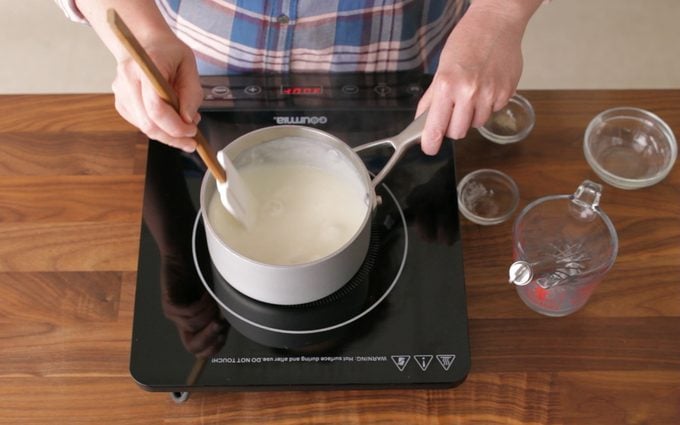
Editor’s Tip: Most roux recipes instruct you to use a whisk, but I like using a rubber spatula. It helps you get into the corners of the saucepan, making sure the mixture doesn’t collect there and burn.
Step 2: Keep it going for a blond roux
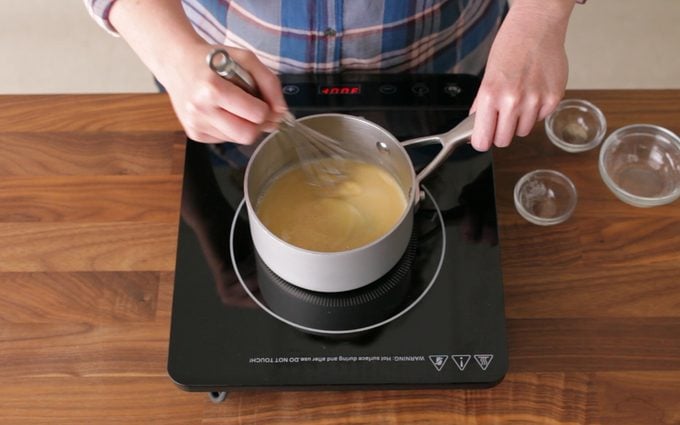
To deepen the nutty flavor of your roux, continue cooking it for as long as 10 minutes, stirring frequently. This will weaken the thickening power of the flour, but it will turn an appealing caramel color and add a huge amount of flavor to any dish.
Step 3: Cook even longer for a brown roux
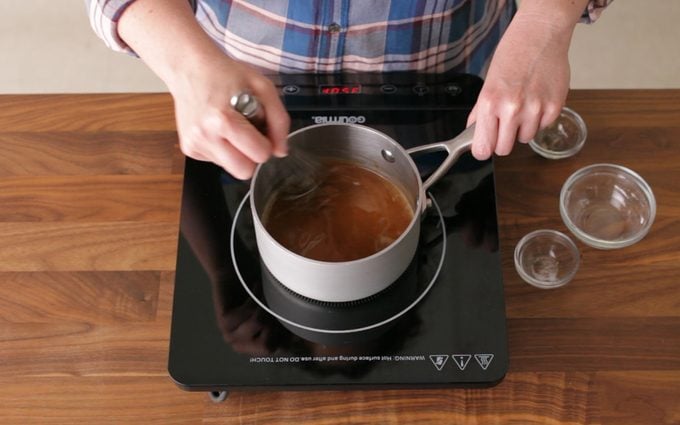
For a brown roux, keep going for another 20 minutes, cooking the roux as long as 30 minutes total. It will turn out deep and rich with a nuttier flavor and aroma. It’s reminiscent of brown butter with an almost smoky quality.
Step 4: Cook just a little longer for a dark roux
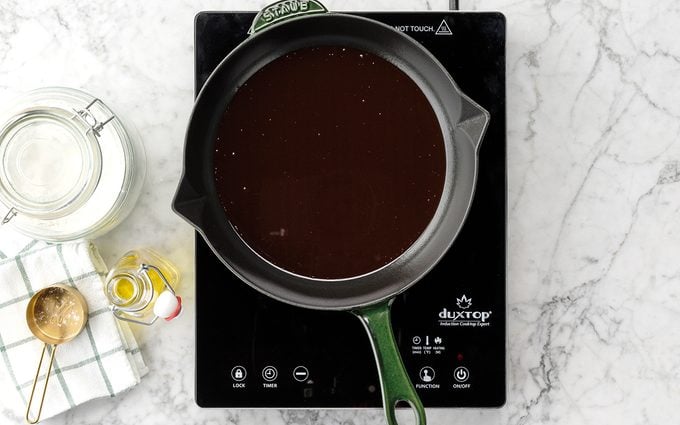
There are a few things to keep in mind when making dark roux. First, the thickening power decreases as the color increases, so plan to make extra when making a darker roux.
This type of roux also burns very easily as it darkens. If you notice any dark flecks in your roux, toss it and start over—otherwise, it won’t thicken properly and your recipe will taste burnt. To avoid ruining your dark roux, stir constantly and lower the heat to medium-low. Remember, it needs to cook for at least 45 minutes. Be patient!
Step 5: Use the roux or save it for later
Use your prepared roux as the foundation for any number of dishes, either immediately or over time. To use the roux immediately, whisk in 1 cup of cold milk or broth. Bring the mixture to a boil and cook for about 2 minutes, stirring until the liquid is nice and thick. You can easily create a cheese sauce from here by adding shredded cheese.
You can also save the roux for later, storing it in an airtight container in the refrigerator until you’re ready to use it. Making roux ahead of time is the secret to perfect homemade gravy! To prevent lumps when adding liquids to a roux, always add cold liquid to hot roux (or, cold roux to hot liquids). If both the roux and the liquid are hot, the mixture will clump up quickly and you’ll end up with lumps.
Tips for Making Roux
How to Store Roux
To make it ahead, prepare the roux and let it cool slightly before storing in an air-tight container in the refrigerator. It lasts up to six months in the refrigerator or up to a year in the freezer. To freeze roux, place dollops of roux onto a sheet pan and place them in a freezer bag once they’re frozen. Roux can also be frozen in ice cube trays.
How to Keep Roux from Burning
If your roux accidentally burns, there’s no way to fix it. The burned flour will impart an acrid flavor and aroma to any finished dish, so it’s best to throw away burned roux and start over. The best way to keep roux from burning is to cook it over medium heat and stir the mixture continuously. That will not only help stop clumps from forming, but it will also keep the flour from sticking (and burning) to the bottom of the pan.
The Best Oil to Use for Roux
Many dairy-based soup and sauce recipes use butter for making roux. Butter is flavorful on its own, so it adds an extra layer of flavor to the finished dish. That said, butter is not the best choice for dark roux because it burns easily. It’s better to use an oil with a high smoke point, like canola oil. Lard is an excellent choice for making roux when the use of animal fats is not a concern.



